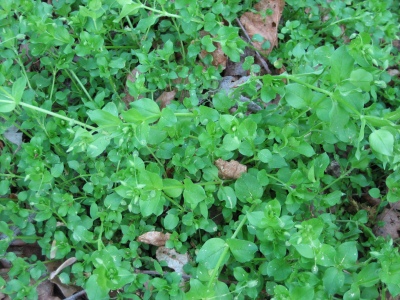Spring is in full swing in Charlotte. Everything is blooming and the trees are leafing but the most exciting part is that the wild edibles are everywhere! The idea of eating weeds is a fairly new concept to me. I’ve been enjoying the bounty from my yard for a couple of years now. If it’s a new idea, start small. That’s what I did and really continue to do. I admire and hope to learn from the experienced herbalists whose knowledge is vast and magical. But you can start with just a few simple beauties and reap the benefits. So, I’ll focus on those.
I’ve always seen Wild Violets as an early indicator of spring. I have long admired this beautiful gift after winter but didn’t know, until recently, how much they had to offer. Both the leaves and flowers are high in Vitamin C and A. A 1/4 cup of leaves has about the same amount of Vitamin C as FOUR oranges! * I love to garnish salads with the flowers and here is a great dressing recipe to use with the leaves. But consider using them in other recipes that call for mild greens and dressing up desserts and other dishes with the beautiful flowers.
Creamy Wild Violet Dressing
- ½ cup olive oil
- 1 Tbsp Apple Cider Vinegar (or fresh lemon)
- 1 tsp honey
- 2 cups fresh Violet greens (I’ve also use chickweed or a combo)
- ¼ tsp salt
- 1 garlic clove
- dash of pepper
- ½ cup yogurt (homemade or organic/plain)
- Set aside yogurt, blend other ingredients in a food processor (or blender)
- Add yogurt, and blend gently until smooth.
Chickweed is another favorite and pretty much everyone has chickweed! I have it throughout my yard but the healthiest patch is in a shady part of the woods. Chickweed contains magnesium, calcium, iron, copper, zinc, chlorophyll, protein, and vitamin A. It has a mild taste and is great just added to a fresh salad. If you have chickens, remember they love it too. It helps make tasty eggs!
It’s pretty easy to identify. There are several key points. There are sets of two leaves opposite each other on the stem, there is a line of fine hair on one side of the stem and at the leaf sets sometimes it will switch sides. The flower is small and white. It looks like it has 10 petals but really it’s just 5 with very deep slits. Chickweed doesn’t like the heat so patches in the sun will fade first but it will last a long time in the shade and will sometimes survive the winter. It’s definitely going strong and ready to eat while you are waiting for spring greens to get up and going. This year my greens made it through the winter but that doesn’t always happen.
Of course, I can’t forget the amazing Dandelion. The bane of grass lovers everywhere, the dandelion is a powerhouse of nutrition. Dandelion is considered a “bitter”. We tend towards sweeter greens in the US but bitters can serve an important part in our digestive process. They help stimulate stomach acid which in turn, helps us digest more efficiently and to access maximum nutrients from our food. Contrary to popular opinion, “too much stomach acid” is not causing “heartburn”, it’s actually too little! So, the condition is complicated by the over prescribing and self medicating with antacids. Read more about this here, on Heal Thyself.
It’s easiest just to add a few leaves to your salad. You can also make teas with the leaves and fritters with the flowers. Make sure, if you do decide to harvest, that they are in an area free from pesticides and herbicides.
Suburban dwellers have become grass farmers and in order to maximize their “crop” they spend hours upon hours spraying, cutting and fertilizing. All of this work for something that can’t be eaten and makes a poor habitat for the bugs and wildlife we need to have a thriving ecosystem. It’s just one big monocrop that stretches across the US. I’ve seen estimates stating that upwards of $40 BILLION is spent on lawn care! Many people are using more pesticides and herbicides per acre of lawn than is used per acre of agriculture.
Maybe it’s time to rethink some of that and see the beauty in the native plants (aka weeds) that grow without our money and labor. Not only is it easier but it’s free food and free medicine too! (More on healing plants in the next post.)
Start small, with things you recognize easily. Soon, you will find that plants draw your eye and you see potential food everywhere!




I always take Magnesium supplements because it helps with my bruxism. Magnesium can really relax the tensed muscles.”;`”,
Enjoy your weekend! http://foodsupplementdigest.com/fish-oil-benefits/
just this year i finally started eating purslane. i had known about it for years but just never got around to trying it. it’s the most incredible fresh green + lemon flavor without the astringent quality of lemon. it’s high in iron, too. it’s great raw or sauteed, i haven’t tried boiled but steamed should be great.
http://web.extension.illinois.edu/cfiv/homeowners/030726.html